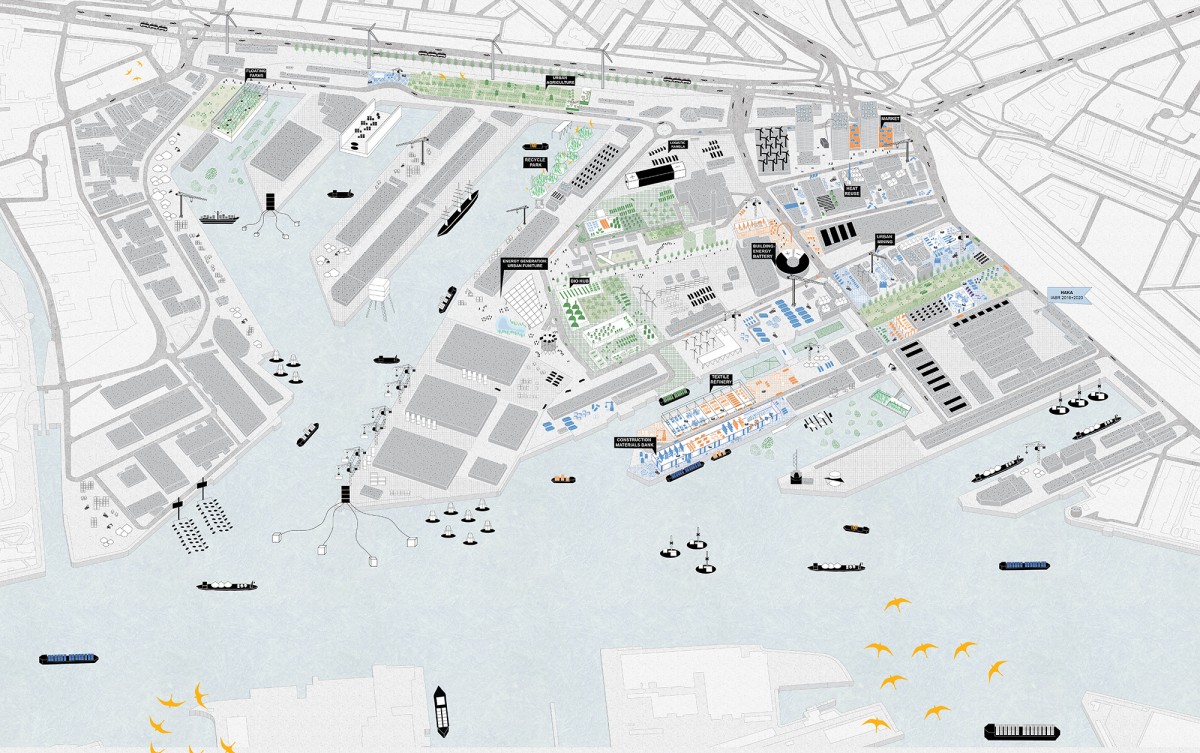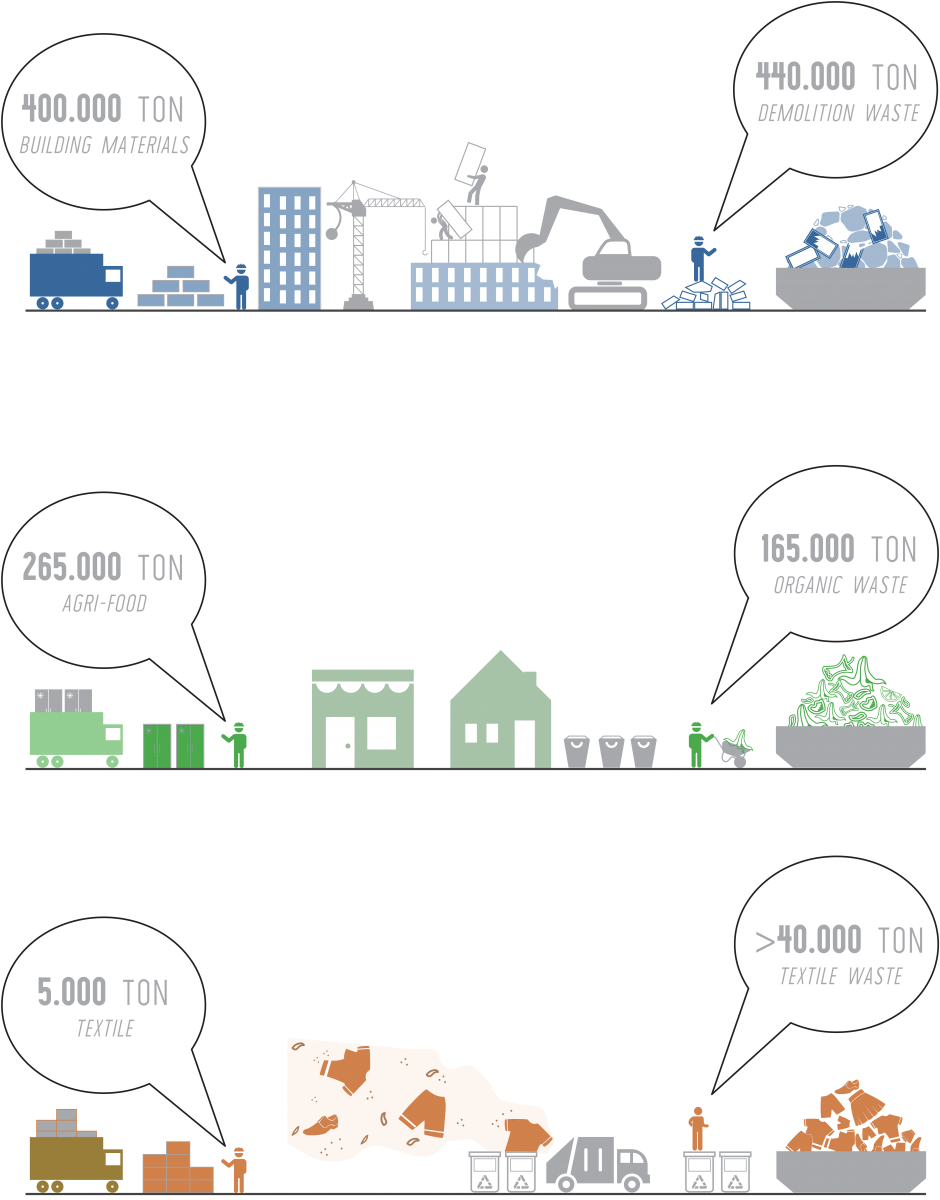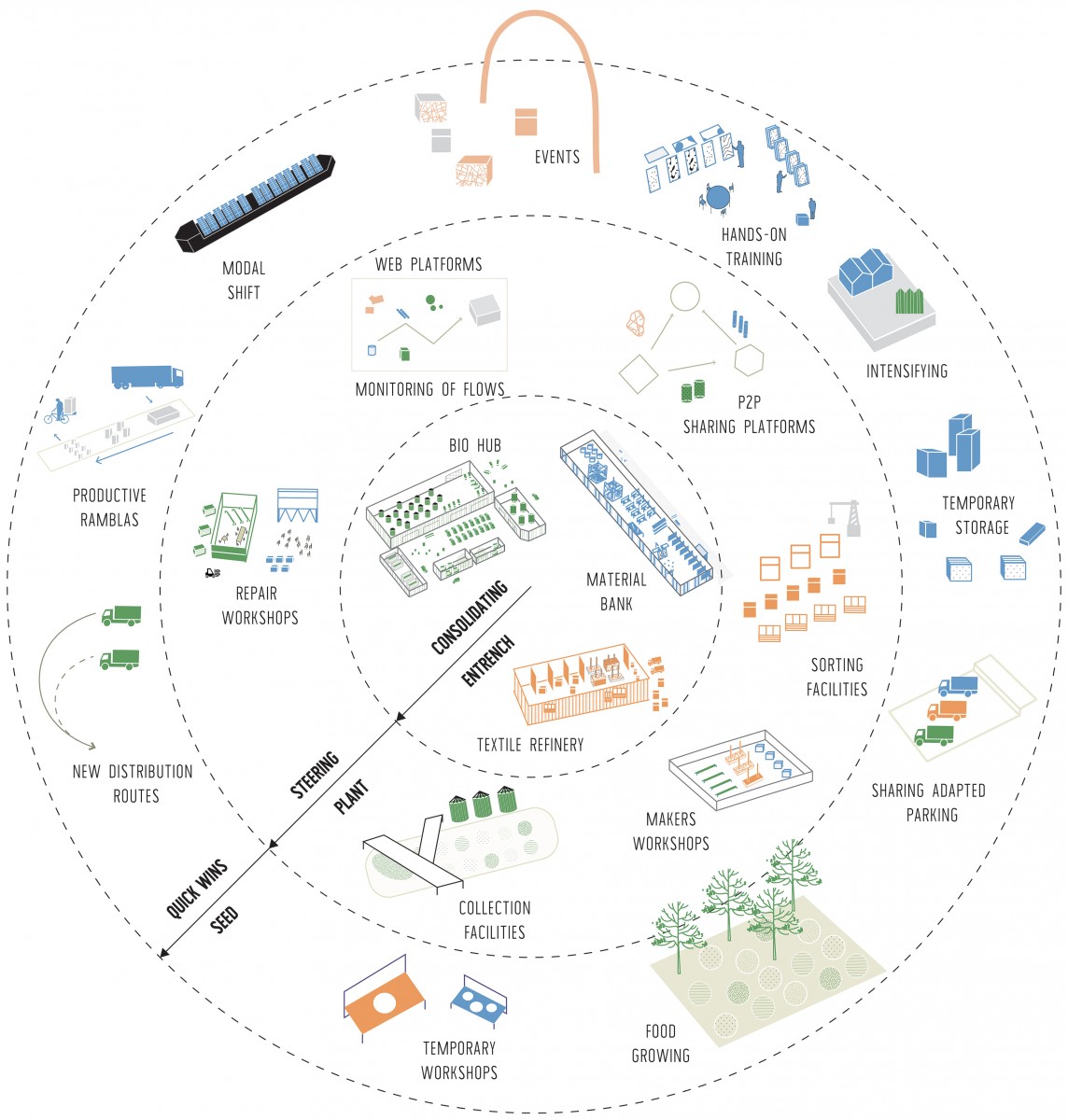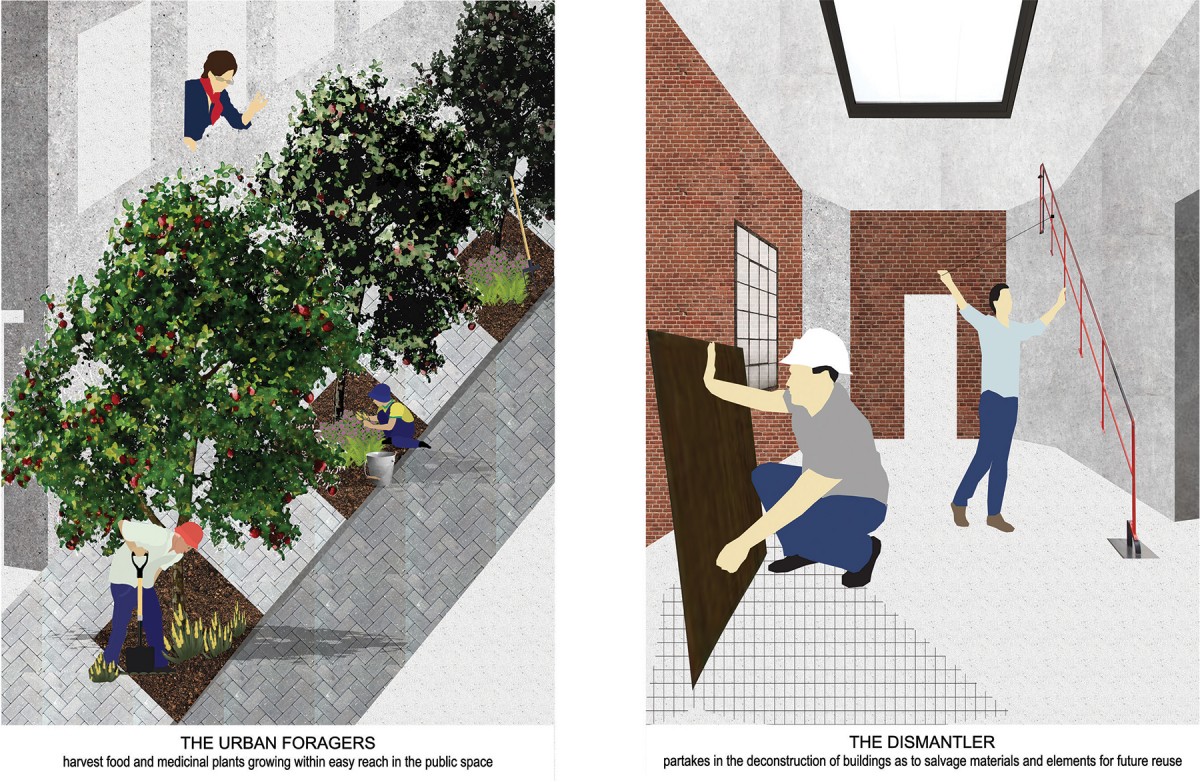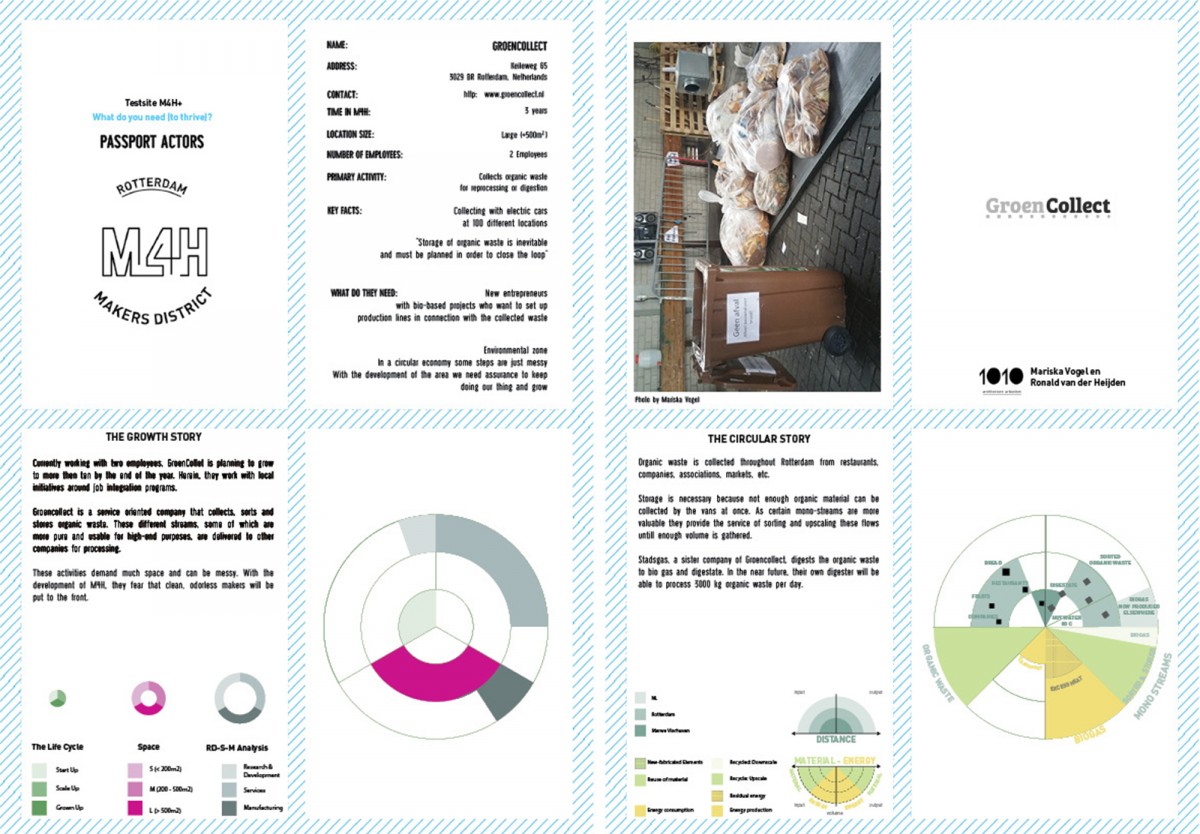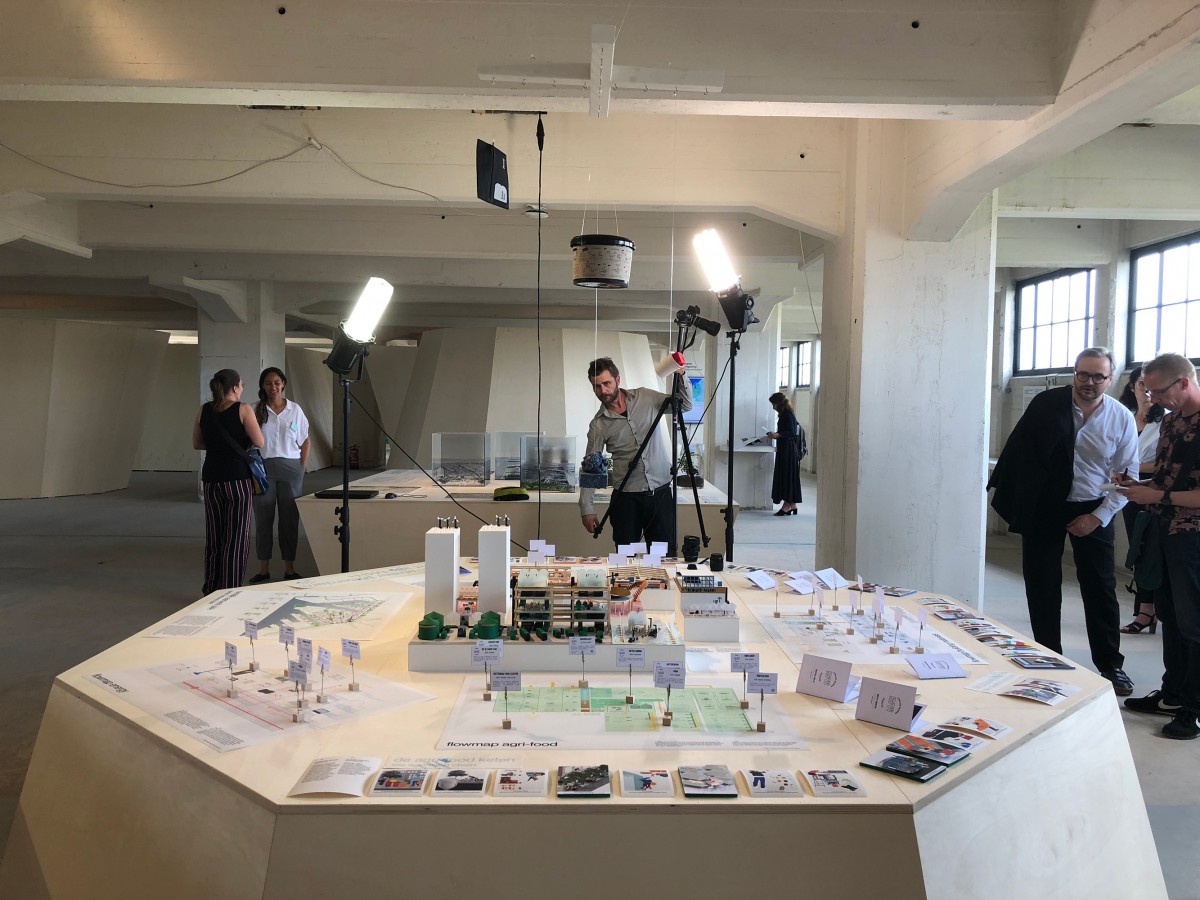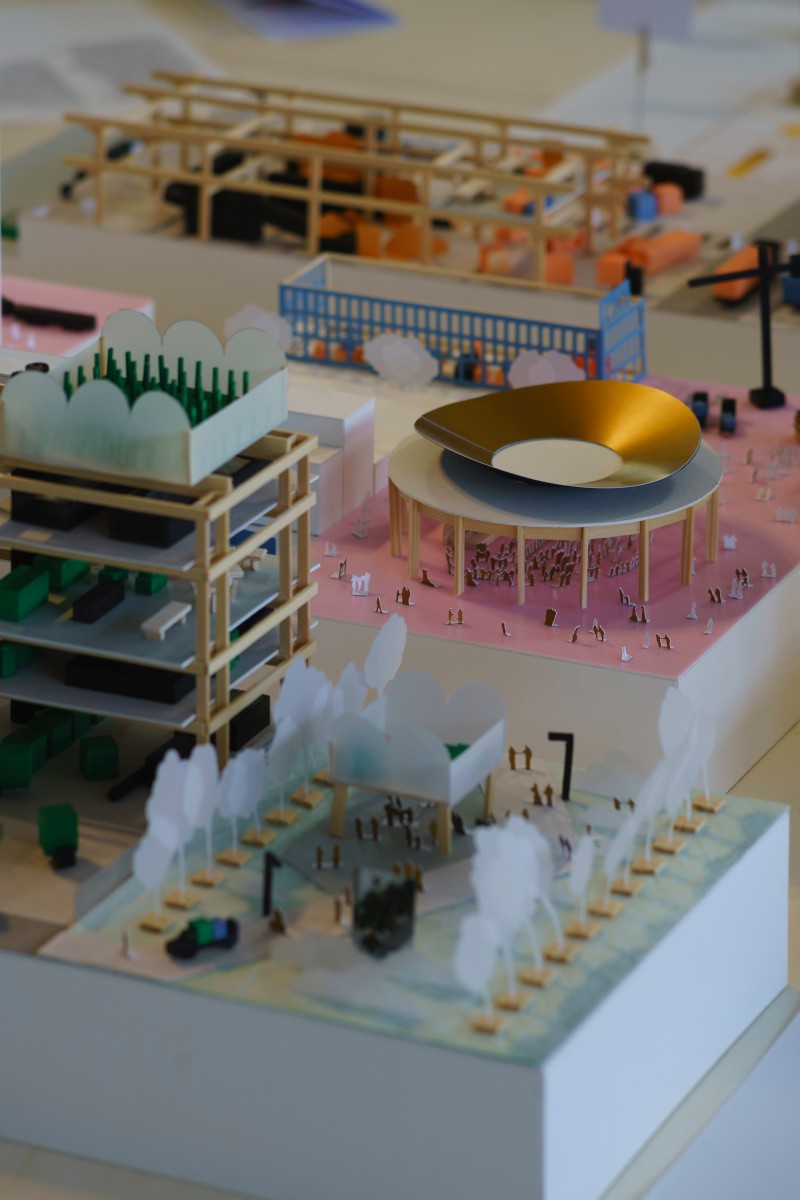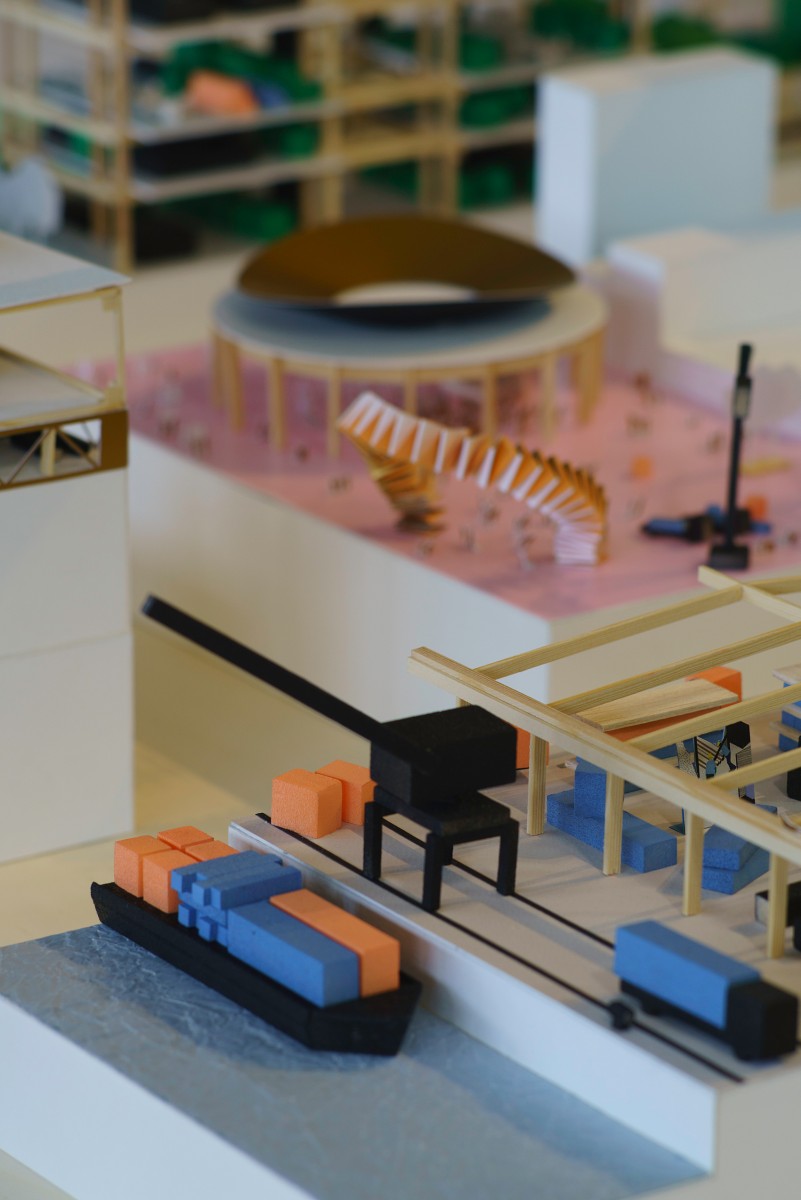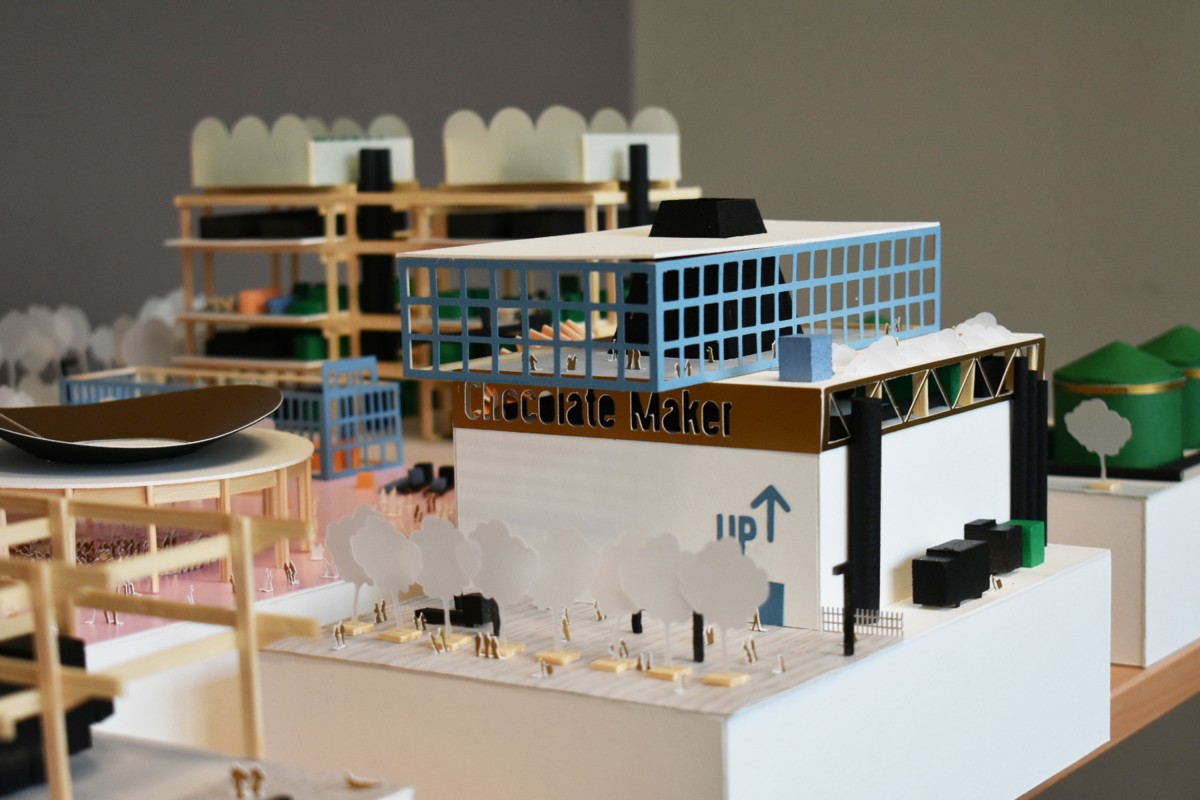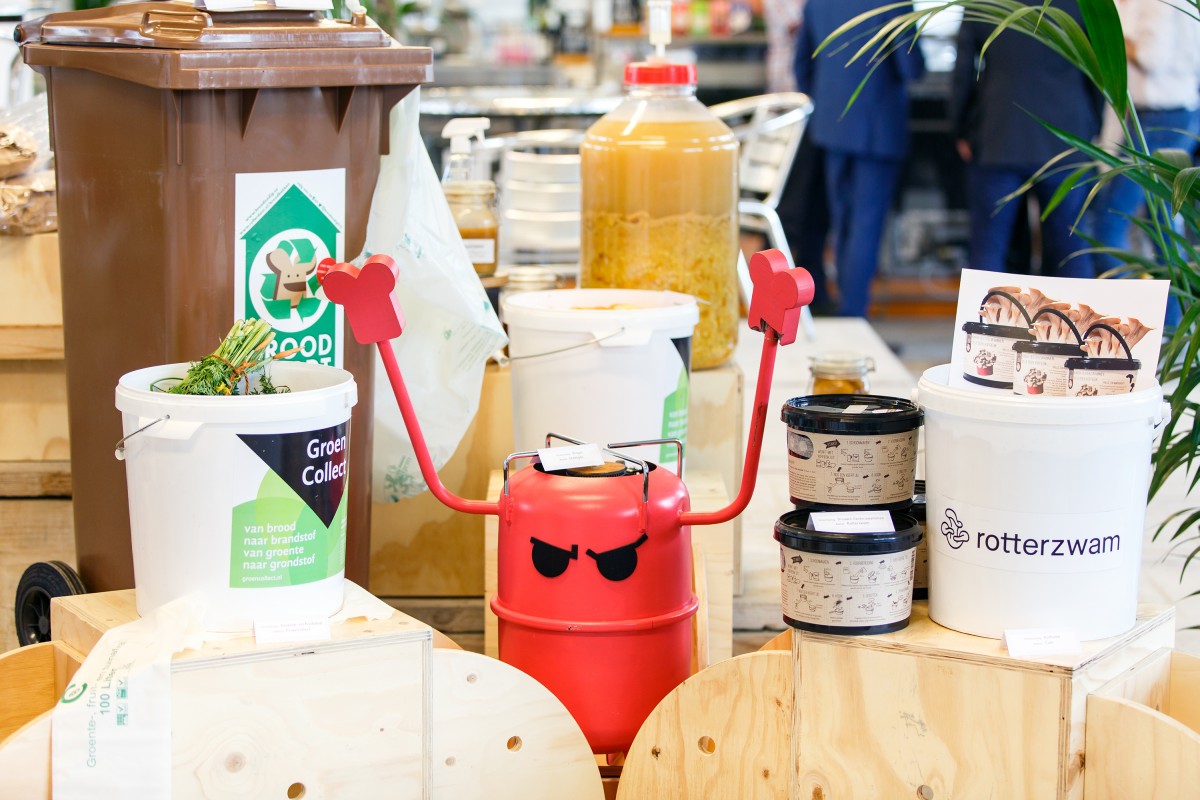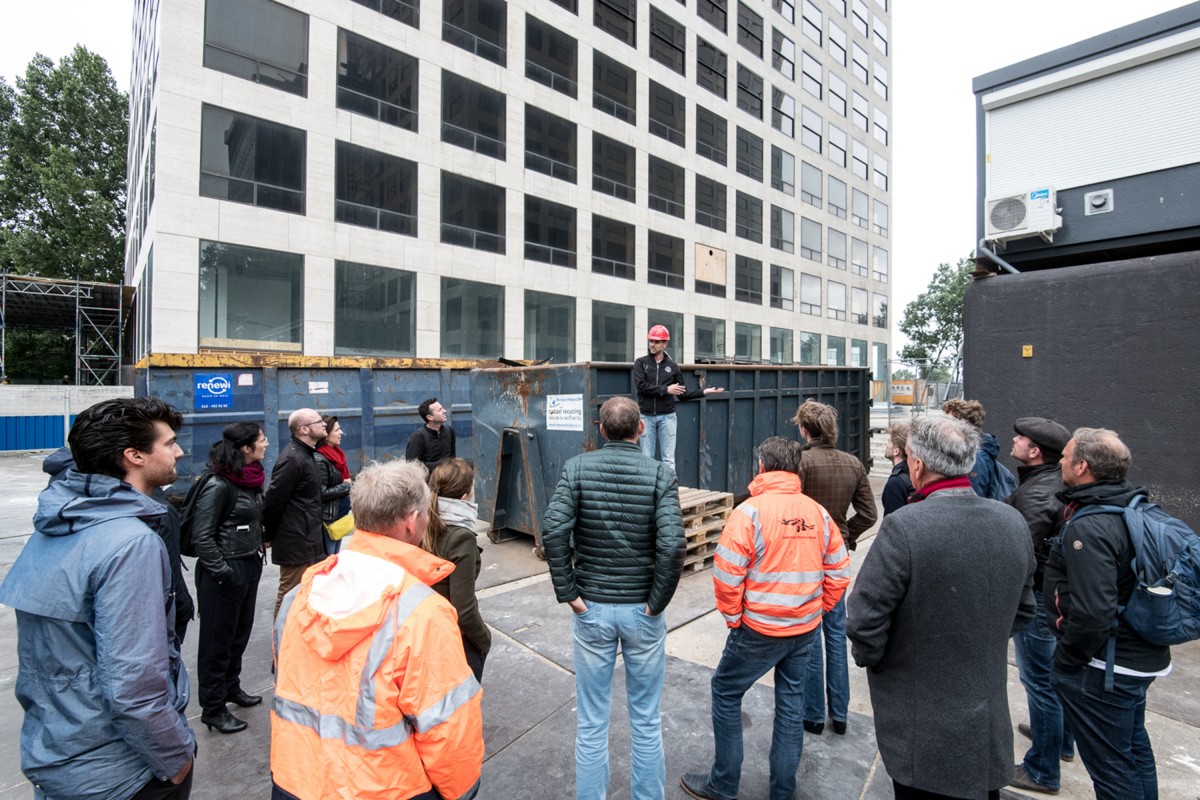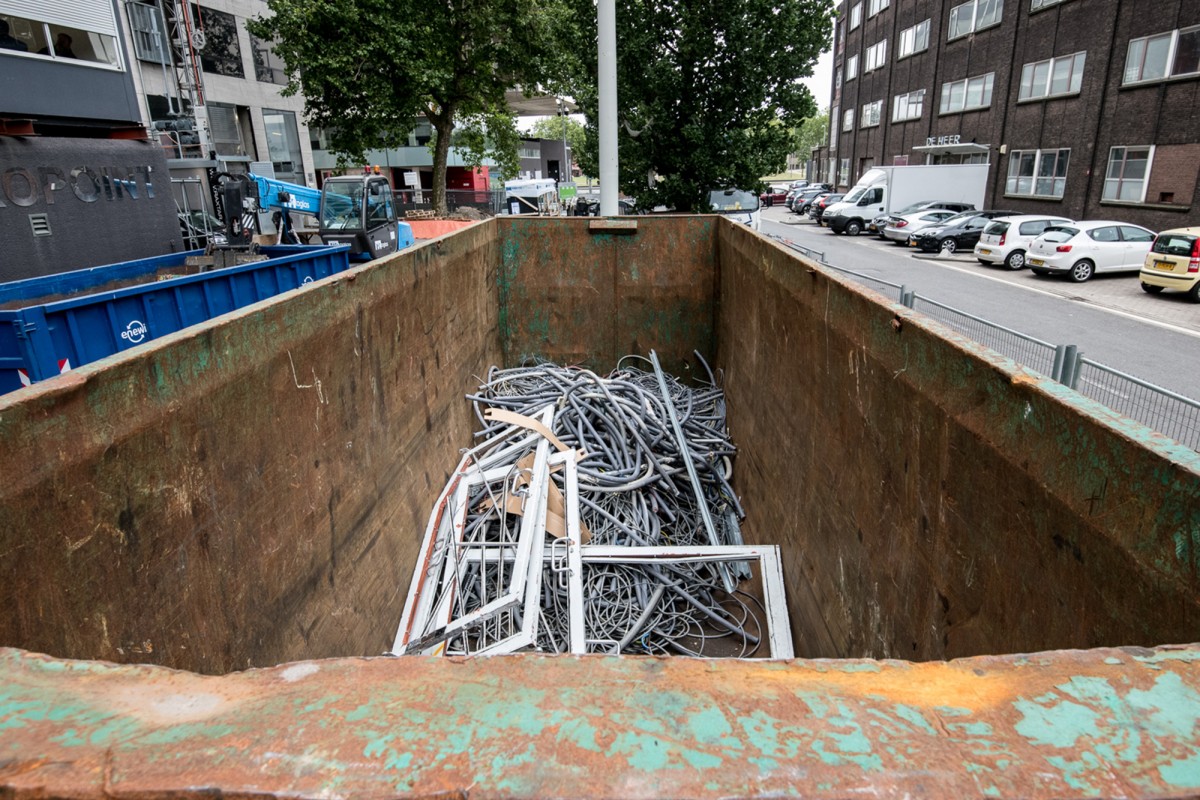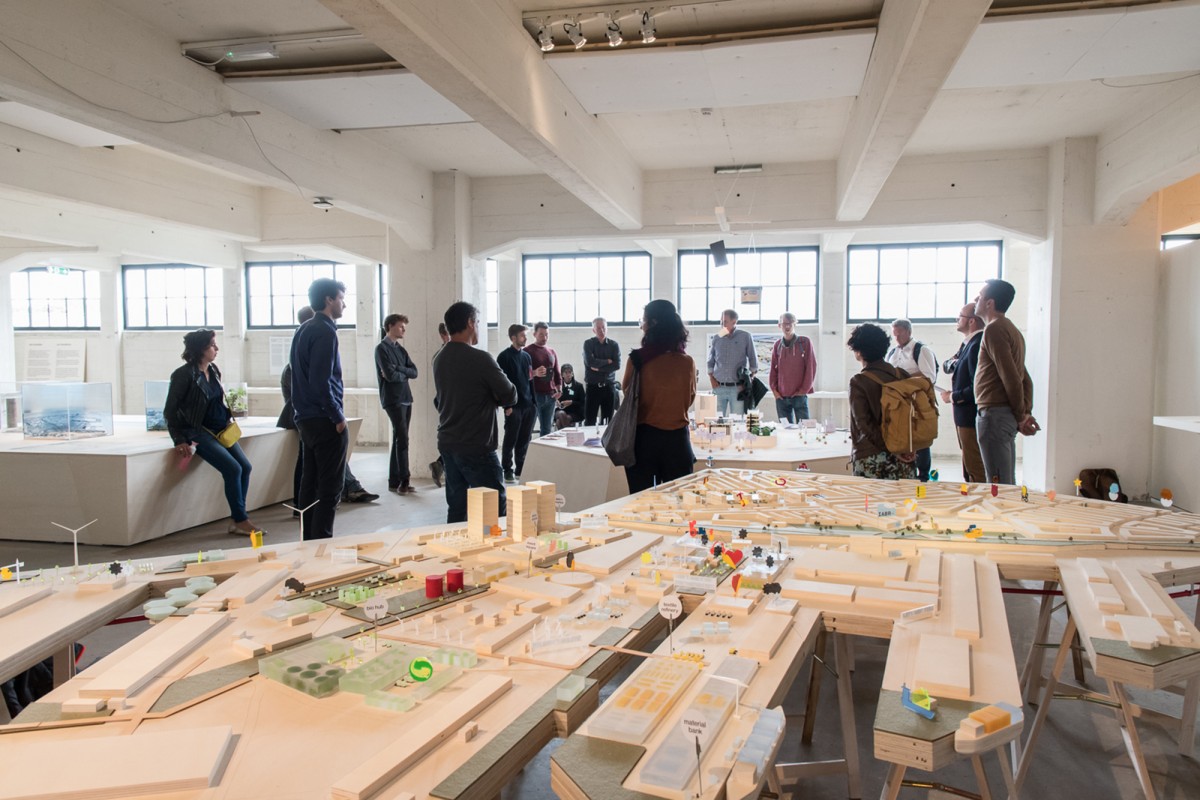BUILDING FURTHER ON WHAT IS THERE
Previous editions of ATELIER ROTTERDAM (IABR 2014 & 2016) demonstrated how the material flows that criss-cross the city can be better valorised and offer opportunities for a renaissance of urban activity.
M4H is an attractive place for innovative pioneers. How can we encourage these entrepreneurs to close material chains? In this concept study, Team 1010 (1010 + Mariska Vogel & Ronald van der Heijden) starts from the potentials of various local actors, with the ambition to forge some promising coalitions as a foundation for circular area development. City makers dream of circular area development but often fall short in terms of actual knowledge about physical flows or the recognition of fledgling and fragile initiatives on the ground. That is why we took the bold step to start talking to a number of entrepreneurs who are already located there or might settle there in the future. A colorful pallet of information but also dreams & expectations were unleashed.
THE MISSING LINKS
Cities are places of abundance: new activities and products emerge at the intersection of people with ideas and raw materials. The city's waste streams are the raw materials of the future. The people we spoke to confirm the presence of this latent capital, which is often ignored today. In parallel with the interviews with local entrepreneurs, we studied promising regional residual streams. In a port city like Rotterdam, there is enormous potential in the globalised flux of raw materials, (semi-)manufactured goods and waste that traverse the region. The extent to which these flows can be shortened & valorised depends on local capacities and skills. We identified textiles, agri-food and construction materials as promising secondary raw materials for regional economic development. However, the flows are heterogeneous and sometimes unpredictable. If we want to make these industries and processes more circular, we need to embed this ambition in a complex network of producers, users and intermediaries; where proximity can be an incentive. The high word is out: circular area development stands or falls with the quality & scale of coalitions between different actors, its success cannot be measured by the performance of an individual actor but by the scale of the network and the quality of the connection between actors. From a spatial point of view, these coalitions can be strengthened with the help of shared facilities, focused on profitable and smooth processing of residual flows. They can have different manifestations: a specific machine or building, but equally a web platform or a well-enclosed plot suitable for outdoor operations. Circular activity can be described as a chain of materials and operations. Each form of reuse starts with a container and then depends on a sequence of orchestrated actions. Today, much of this processing takes place in dusty corners of a commercial building, a type of labour with little professional recognition and no face. However, there are opportunities here for the emergence of a new generation of crafts!
HYPOTHESES
As a starting point for further consultation with entrepreneurs, experts and policymakers, 3 ambitious proposals were drawn from as hypotheses to drive the circular economy in M4H: A MATERIALBANK (where recovered building materials are made usable again and can be traded together with new building products); a BIOHUB (where the potential of organic waste as a raw material for new products is explored, before it is processed as biomass) and a TEXTIAL RAFFINADERY (where new mechanical and chemical recycling techniques can be tested and applied). During the IABR 2018, the conversation with entrepreneurs, experts and policymakers revolved around these hypotheses. These conversations probed where the opportunities lay, but also the vulnerabilities In the final phase of the project, a strategy for each of these streams will be outlined in an action plan along three paths (spatial recommendations, coalition building and operational design) that will channel the energy and momentum of the working session into three follow-up processes and pilot projects.
